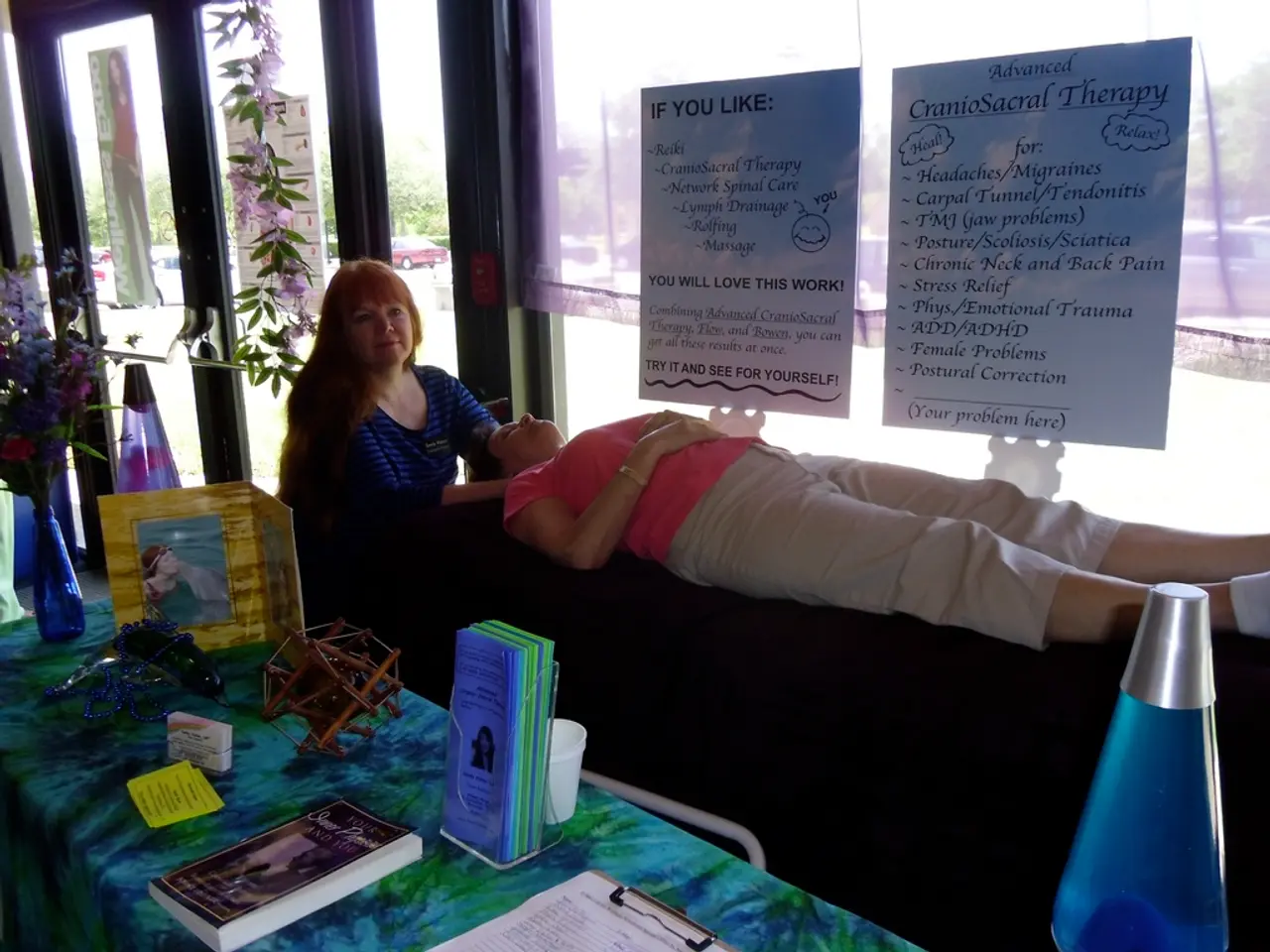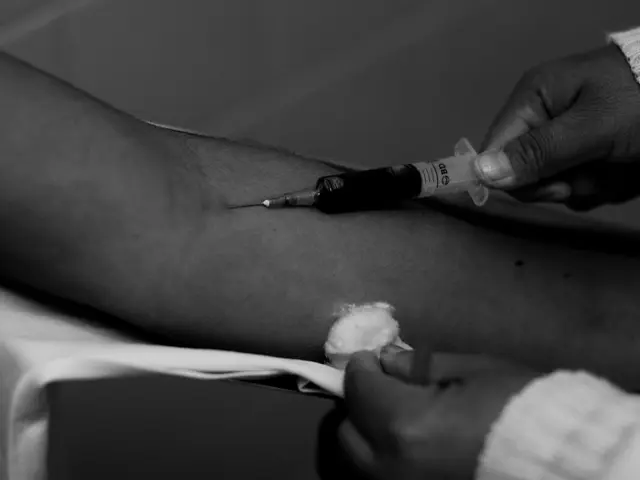Treatment Options for Psoriasis and Psoriatic Arthritis: Exploring Medications and Home Remedies
In the realms of dermatology and rheumatology, two related conditions—psoriasis and psoriatic arthritis (PsA)—present unique challenges for patients. However, a variety of treatments are available to help manage these conditions and improve the quality of life for those affected.
Medications and Biologics
The treatment landscape for psoriasis and PsA includes oral medications, biologics, and home remedies.
Oral medications, such as disease-modifying antirheumatic drugs (DMARDs) like methotrexate and apremilast, are used to target inflammation processes and can help reduce symptoms of both conditions. Other oral drugs, such as cyclosporine and acitretin, are used primarily for psoriasis, while tofacitinib, an JAK inhibitor, has FDA approval for PsA and is sometimes used off-label for psoriasis.
Biologics are advanced treatments that target specific immune pathways involved in inflammation. Examples include etanercept, adalimumab, infliximab, golimumab, certolizumab pegol, secukinumab, guselkumab, risankizumab, ustekinumab, and ixekizumab. These drugs are administered through subcutaneous injections or intravenous infusions and help control immune overactivity causing skin and joint symptoms.
Home Remedies and Natural Treatments
In addition to medication, home remedies and lifestyle habits can support treatment for those with both psoriasis and PsA. Stress reduction and exercise are key components in improving overall wellbeing and may reduce flare-ups. Capsaicin topical treatments, oatmeal baths, and turmeric supplements may also help with symptom relief.
A Personalised Approach
A doctor will create an individual treatment plan based on a person's severity of symptoms, triggers, and type of psoriasis present. Biologics have substantially improved outcomes for many patients with both psoriasis and PsA by directly targeting inflammatory pathways.
Other physical activities or exercises may help people reduce pain, stiffness, and physical restriction due to PsA, but those with PsA may wish to avoid exercise that involves long periods of walking or standing. Corticosteroids can help manage the inflamed joints of PsA and can be injected directly into affected joints by a doctor to relieve pain and bring down inflammation.
Massage therapists use techniques to relax joints and muscles, which may help relieve stress as a trigger in people with psoriasis and reduce joint stiffness in those with PsA.
Key Takeaways
| Treatment Type | Common Examples | Use | |---------------------|-------------------------------------------------|----------------------| | Oral Medications | Methotrexate, Cyclosporine, Apremilast, Tofacitinib, Acitretin | Psoriasis & Psoriatic Arthritis (most except acitretin) | | Biologics | Humira, Stelara, Enbrel, Tremfya, Skyrizi | Moderate to severe disease, targets immune system | | Home Remedies/Natural| Stress reduction, exercise, capsaicin, oatmeal, turmeric | Symptom relief, adjunctive |
These treatments are chosen based on disease severity, patient preference, and response to prior therapies. Biologics have substantially improved outcomes for many patients with both psoriasis and psoriatic arthritis by directly targeting inflammatory pathways.
- For individuals suffering from psoriasis and psoriatic arthritis (PsA), a variety of treatments are available, including oral medications, biologics, and home remedies.
- Oral medications like methotrexate, apremilast, cyclosporine, tofacitinib, and acitretin (except for acitretin) are used to treat both conditions, while drugs such as etanercept, adalimumab, infliximab, golimumab, certolizumab pegol, secukinumab, guselkumab, risankizumab, ustekinumab, and ixekizumab are examples of biologics that target specific immune pathways involved in inflammation.
- Home remedies and lifestyle habits, such as stress reduction, exercise, capsaicin topical treatments, oatmeal baths, and turmeric supplements, can support treatment for those affected by both psoriasis and PsA.
- Doctors create individual treatment plans based on a person's severity of symptoms, triggers, and type of psoriasis present, and the choice of treatments is influenced by disease severity, patient preference, and response to prior therapies.
- Biologics have improved outcomes for many patients with both psoriasis and PsA by directly targeting inflammatory pathways, and corticosteroids can help manage the inflamed joints of PsA when injected directly into affected joints by a doctor.
- Massage therapies, which help relax joints and muscles, can provide relief for both stress triggers in people with psoriasis and joint stiffness in those with PsA.
- A doctor may recommend avoiding exercises that involve long periods of walking or standing for individuals with PsA, as these activities may exacerbate their symptoms.




